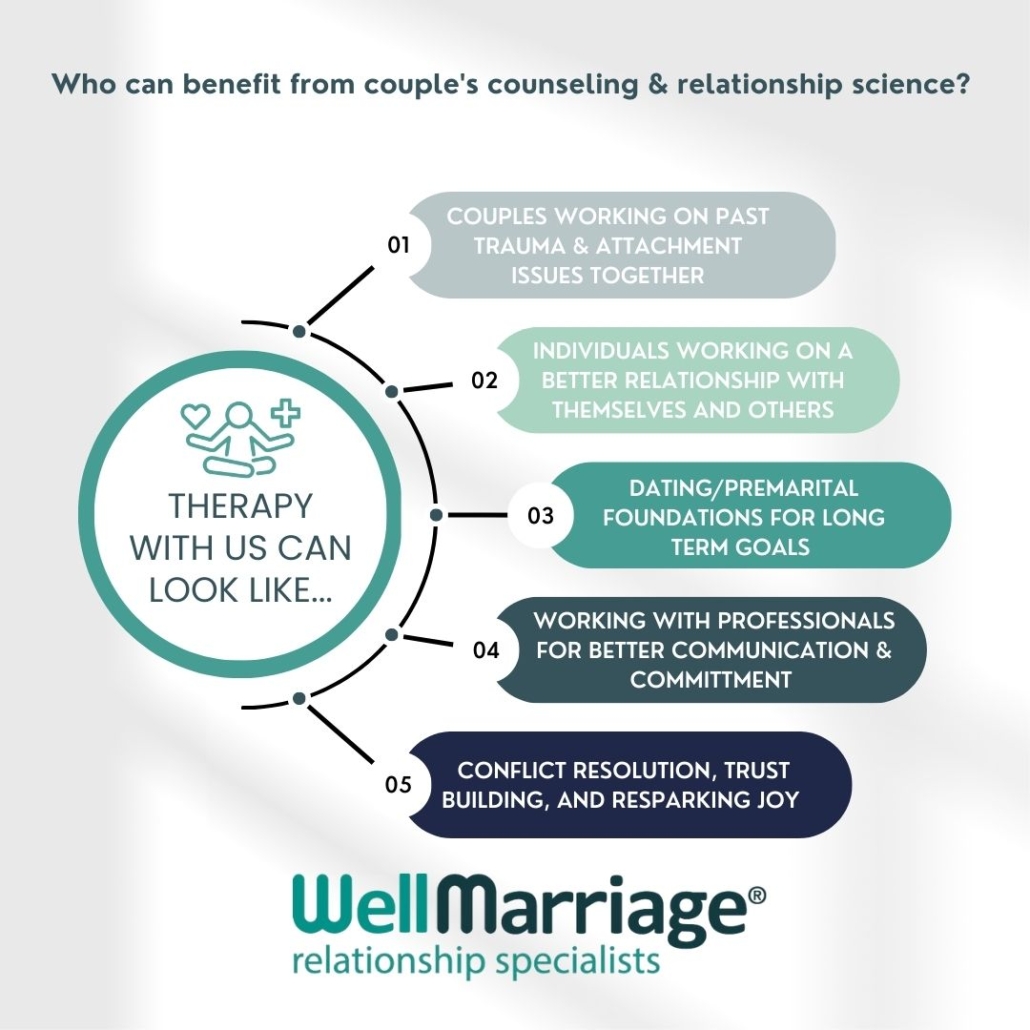Some Known Questions About Aim Point Counseling.
Some Known Questions About Aim Point Counseling.
Blog Article
Rumored Buzz on Aim Point Counseling
Table of ContentsThe 9-Second Trick For Aim Point CounselingExamine This Report about Aim Point CounselingThe 30-Second Trick For Aim Point CounselingSome Ideas on Aim Point Counseling You Need To KnowThe Definitive Guide to Aim Point CounselingAim Point Counseling Can Be Fun For Anyone
The longitudinal layout entails a pre-treatment study and two follow-up studies at 3- and 12-months post-intervention. The study is embeded in 8 Relationships Australia Victoria centres, throughout urbane, outer suburbs, and regional/rural websites. Relationships Australia, a non-government organisation, is the biggest provider of couple counselling and relationship services in Australia.
These high prices of partnership breakdown have actually been consistently associated with adverse wellness effects for both adults and youngsters adhering to divorce/separation.
6 Simple Techniques For Aim Point Counseling
Longitudinal research studies likewise suggest that children of separation have a higher incidence of psychological problems, medication and alcohol usage, and risky sex-related behavior [7] Although the results of divorce and separation can be damaging, research indicates that high partnership disharmony in undamaged pairs is likewise most likely to have adverse outcomes.
Research study to date has identified both pair and specific aspects that may contribute to partnership dissonance. These consist of partnership complete satisfaction and commitment at the pair level, and depression at the specific degree.
A Biased View of Aim Point Counseling
While the majority of studies show enhancements in connection satisfaction complying with couple therapy, they are restricted by the examples and measures made use of, largely temporary follow-up time frames, and evaluations that do not account for the dyadic nature of pair information - porn addiction. Connection commitment, based on actions such as the Dedication Stock (CI) [19], is another commonly explored connection outcome.
To summarise, study suggests that couple-specific variables along with private factors might predict the results of couple counselling and relationship solutions. The causal direction of these connections, nonetheless, is much less clear. These observations are necessary, because, to warrant and direct the application of partnership services such as pair counselling, empirical evidence should discover both the end results of connection solutions and the factors that predict effective treatment.
There is an expanding agreement that efficacy research studies need to be complemented by performance research to best notify scientific technique [ 29] The limited useful link efficiency research study that exists to day suggests that couple therapy can improve end results such as relationship satisfaction [33,43], communication skills and basic well-being [44], at the very least in some European countries.

We currently recognize little regarding the accounts of pairs who seek partnership education contrasted with those that look for relationship therapy, or the results of these programs. Nonetheless, anecdotal evidence suggests that there may be substantial distress amongst at the very least some pairs looking for relationship education. Partnership education programs differ from couple therapy as they are generally extremely structured, performed in teams, and concentrate on a mixture of four components; awareness, feedback, cognitive change, and abilities training [45]
A Biased View of Aim Point Counseling
Feedback includes individuals completing surveys about their relationship (e.g. actions of social problems), and getting information on what their ratings indicate. Cognitive-behavioural techniques promote transforming cognitions to facilitate positive partnerships. These may consist of promoting practical attributions/expectations around unfavorable partner practices [46] In skills training, pairs attend talks or discussions on connection abilities, and practice these during facilitator-led activities [ 45]
These effects have actually lingered for up to 4 years in some studies [47] These meta-analyses highlight limitations in the current literature on relationship education. Particularly, the bulk of researches entailed pairs from upper socio-economic backgrounds who were not experiencing high relationship disharmony [47,48] This sample account might not represent clients who typically present for connection education.
The Best Guide To Aim Point Counseling

Extremely little research has actually analyzed the comparative benefits of couple therapy and connection education and learning programs. As customers are likely to self-select into these service types, it is unclear whether particular connection distress profiles existing per solution type, or certainly whether there is an interaction in between offering profile, service type and result.
(https://writeablog.net/a1mpoint/aim-point-counseling-unraveling-lifes-knots-finding-your-true-direction)
Therefore, we have actually included a 12-month follow-up to determine longer-term trends and impacts.
We recommend to use multi-level analytical modelling procedures that regulate for the inter-dependence of couple data to examine any kind of therapy effects. The certain objectives of the ECC study are to: 1. Map profiles of clients seeking area agency-based couple counselling vs. relationship enhancement programs in terms of socio-demographic and connection signs (such as connection satisfaction, relationship commitment, social troubles, and factors for participating in), along with wellness (such as clinical depression, basic well-being) and wellness solution use (eg.
Figure out whether couple therapy and partnership education solutions enhance three- and twelve-month end results for relationship satisfaction, commitment, and depression, making use of analytical evaluations proper to couple information. christian counseling. Identify the loved one contributions of customer factors (specific and couple) and therapy/education aspects to outcomes at 3- and 12-months, and to sustainability of results over time.
Excitement About Aim Point Counseling
Multi-level modelling to establish pre-post distinctions, regulating for dyadic (pair) degree. To add to the literary works analyzing the performance of community-based pair counselling.
Report this page